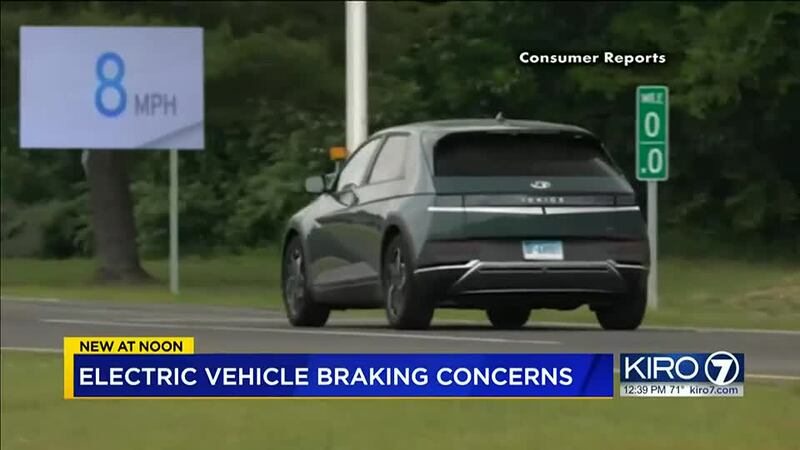Consumer Reports is sending a warning to drivers -- the electric vehicle in front of you might be slowing down, but you might not know until the last second. New tests show the brake lights on some EVs don’t come on early enough to warn other drivers the car is coming to a stop.
Video from the Consumer Reports Auto Test Center illustrates the concerns. The electric vehicle starts at 30mph, but the speedometer then shows it slowing down. It’s not until the car hits just 2mph, right before it comes to a stop, that the brake lights finally turn on. The car was slowing down for nine seconds, but there’s no visual warning for anyone behind it.
“It’s something we want consumers to be aware of,” Alex Knizek, manager of automotive testing and insights for Consumer Reports, said. “You run the risk of maybe getting in an accident, somebody rearending the car because they didn’t realize it was slowing down.”
Electric vehicles use what’s called regenerative braking or one-pedal driving.
“You can essentially drive the vehicle without ever touching the brake pedal,” Knizek explained.
Experts said if the levels are set so high, you can rapidly slow down the car and even stop it, simply by easing up on the accelerator pedal. You don’t need to hit the brake. If your foot is on that pedal at all, the brake lights will not come on.
Consumer Reports found this issue in models from Hyundai, Genesis and Kia. It impacts 101,000 vehicles.
The manufacturers told us they’ll be installing system updates that would turn on the brake lights earlier as the car is slowing down. They’ll be available this summer for free.
In the meantime, Knizek advises drivers lift their foot fully off the accelerator or hit the brakes. Both should turn on the brake lights.
“Certainly, we don’t want people getting into accidents over something like this,” Knizek added.
STATEMENT FROM HYUNDAI/GENESIS:
“After further investigation, Hyundai and Genesis will be launching a field service campaign to update the EV brake light logic for the Hyundai IONIQ 5, Genesis Electrified G80, Genesis Electrified GV70 and Genesis GV60. There will also be a change made to new production of those models. Regardless of the accelerator pedal input, the brake lights will now turn on when the deceleration rate exceeds 1.3m/s2 (approx. 0.13 G). The service campaign will launch in July for approximately 56,000 vehicles and will be performed free of charge.”
STATEMENT FROM KIA AMERICA:
“Kia America will launch a service campaign to update the software of certain 2022-2023 EV6 (non-GT trims) and certain 2023 Niro EV vehicles. The update is designed to modify the “i-PEDAL” brake logic so that the brake lights illuminate once the vehicle reaches a certain deceleration threshold (approximately 0.13G) using regenerative braking, even if the driver does not release the accelerator pedal fully or depress the brake pedal. The software update will be available at no charge to Kia customers with eligible vehicles. The service campaign applies to approximately 45,000 vehicles and is anticipated to launch this summer.”
©2023 Cox Media Group








